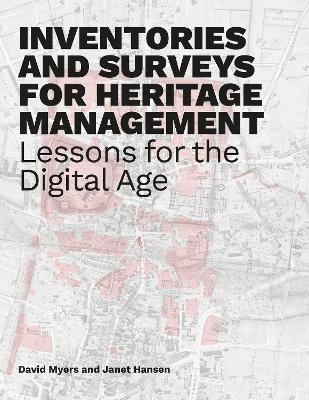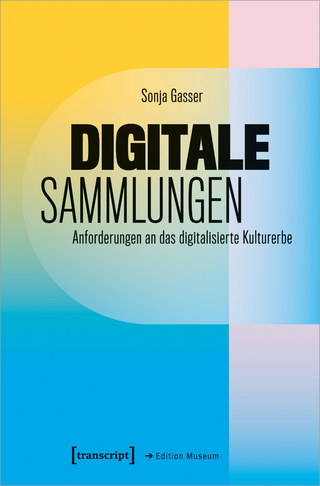
Inventories and Surveys for Heritage Management
Lessons for the Digital Age
Seiten
2024
Getty Conservation Institute,US (Verlag)
978-1-60606-881-6 (ISBN)
Getty Conservation Institute,US (Verlag)
978-1-60606-881-6 (ISBN)
This is the first online step-by-step guide to the design, implementation, and maintenance of heritage inventories and surveys.
A critical first step in the conservation of cultural heritage is to identify and understand the places we want to protect. Inventories and related data-collection activities such as surveys are essential tools in this effort, and heritage-related legislation across the globe now universally mandates their use. However, despite wide understanding of the importance and critical role of inventories and surveys in documenting heritage places, practical, up-to-date guidance on how these instruments should be created, implemented, and maintained has been sorely lacking-until now.
This publication provides a step-by-step guide to identifying, recording, and managing information on heritage resources as a basis for their conservation and management. It is drawn from the Getty Conservation Institute's two decades of experience and research in this topical area, including ongoing work related to its open-source Arches Cultural Heritage Data Management Platform and, previously, the creation of the Middle Eastern Geodatabase for Antiquities (MEGA)-Jordan. It is also drawn from SurveyLA, a multiyear undertaking of historic resources that was a joint project of the City of Los Angeles and Getty and is considered the largest American urban historic resource survey assessment to date.
This open-access publication provides essential guidance on digital inventories and surveys for the identification, conservation, and management of heritage places
“The book seamlessly integrates praxis with relevant theoretical frameworks, principles, and guidelines. It equips readers with a diverse toolkit for the increasing use and implementation of digital methodologies in crafting comprehensive inventories and surveys of heritage sites. These foundational works serve as the basis for formulating effective management and conservation strategies crucial for conserving our cultural heritage assets.
Moreover, it offers a systematic approach, precise terminology, and engagement tools tailored for community participation throughout the inventory process. Its methodologies are adaptable and accessible, catering to a broad spectrum of stakeholders, including not-for-profit organizations, governmental bodies, policymakers, educators, and industry professionals engaged in heritage site identification. This universality facilitates producing adequate inventories for the safeguarding of heritage sites on a global scale. I am sure our community will adopt this work, recognizing its inherent potential and opportunities.” — Mario Santana Quintero, honorary president ICOMOS/ISPRS CIPA Heritage Documentation and professor at Carleton University
“A perfect travel companion for those about to embark on the long and winding, but oh, so beautiful, road of Inventories and Surveys.” —Leen Meganck, Head of Architectural Research, Flanders Heritage Agency, Belgium
“If we are to protect cultural heritage, we need to know what we are trying to protect and where it is. The authors have been grappling with these issues for many years, and they have set out an insightful, comprehensive, and thoughtful contribution to the debate. An essential read for all involved in protecting our heritage.” — Peter G. Stone, UNESCO Chair in Cultural Property Protection and Peace, and President, The Blue Shield
A critical first step in the conservation of cultural heritage is to identify and understand the places we want to protect. Inventories and related data-collection activities such as surveys are essential tools in this effort, and heritage-related legislation across the globe now universally mandates their use. However, despite wide understanding of the importance and critical role of inventories and surveys in documenting heritage places, practical, up-to-date guidance on how these instruments should be created, implemented, and maintained has been sorely lacking-until now.
This publication provides a step-by-step guide to identifying, recording, and managing information on heritage resources as a basis for their conservation and management. It is drawn from the Getty Conservation Institute's two decades of experience and research in this topical area, including ongoing work related to its open-source Arches Cultural Heritage Data Management Platform and, previously, the creation of the Middle Eastern Geodatabase for Antiquities (MEGA)-Jordan. It is also drawn from SurveyLA, a multiyear undertaking of historic resources that was a joint project of the City of Los Angeles and Getty and is considered the largest American urban historic resource survey assessment to date.
This open-access publication provides essential guidance on digital inventories and surveys for the identification, conservation, and management of heritage places
“The book seamlessly integrates praxis with relevant theoretical frameworks, principles, and guidelines. It equips readers with a diverse toolkit for the increasing use and implementation of digital methodologies in crafting comprehensive inventories and surveys of heritage sites. These foundational works serve as the basis for formulating effective management and conservation strategies crucial for conserving our cultural heritage assets.
Moreover, it offers a systematic approach, precise terminology, and engagement tools tailored for community participation throughout the inventory process. Its methodologies are adaptable and accessible, catering to a broad spectrum of stakeholders, including not-for-profit organizations, governmental bodies, policymakers, educators, and industry professionals engaged in heritage site identification. This universality facilitates producing adequate inventories for the safeguarding of heritage sites on a global scale. I am sure our community will adopt this work, recognizing its inherent potential and opportunities.” — Mario Santana Quintero, honorary president ICOMOS/ISPRS CIPA Heritage Documentation and professor at Carleton University
“A perfect travel companion for those about to embark on the long and winding, but oh, so beautiful, road of Inventories and Surveys.” —Leen Meganck, Head of Architectural Research, Flanders Heritage Agency, Belgium
“If we are to protect cultural heritage, we need to know what we are trying to protect and where it is. The authors have been grappling with these issues for many years, and they have set out an insightful, comprehensive, and thoughtful contribution to the debate. An essential read for all involved in protecting our heritage.” — Peter G. Stone, UNESCO Chair in Cultural Property Protection and Peace, and President, The Blue Shield
David Myers is a senior project specialist at the Getty Conservation Institute. Janet Hansen is former deputy manager, Office of Historic Resources, Los Angeles Department of City Planning.
| Erscheinungsdatum | 22.08.2024 |
|---|---|
| Co-Autor | Katie Horak, Annabel Lee Enriquez, Sara Delgadillo |
| Zusatzinfo | 65 color illustrations |
| Verlagsort | Santa Monica CA |
| Sprache | englisch |
| Maße | 216 x 279 mm |
| Themenwelt | Kunst / Musik / Theater ► Kunstgeschichte / Kunststile |
| Geisteswissenschaften ► Geschichte ► Hilfswissenschaften | |
| ISBN-10 | 1-60606-881-4 / 1606068814 |
| ISBN-13 | 978-1-60606-881-6 / 9781606068816 |
| Zustand | Neuware |
| Haben Sie eine Frage zum Produkt? |
Mehr entdecken
aus dem Bereich
aus dem Bereich
Anforderungen an das digitalisierte Kulturerbe
Buch | Softcover (2023)
transcript (Verlag)
29,00 €
innovative Wege der Konzeption und Evaluation von Ausstellungen
Buch | Softcover (2024)
transcript (Verlag)
37,00 €


